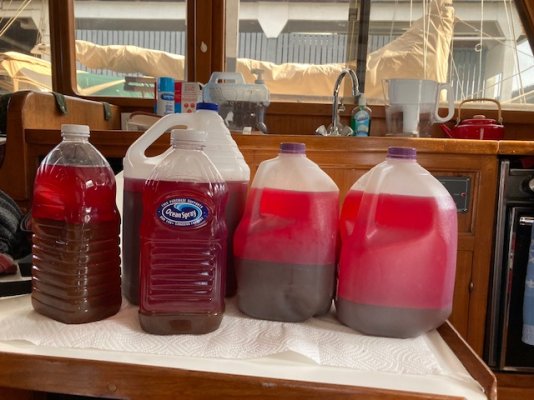Original Post by Pete of Lazy Susan
I am new to the Trawler Forum. Today, I added 100 gallons of diesel to my Mainship Pilot. It has 2 tanks. I put 50 gallons in each tank. I then forgot to put the caps back on. I am in the nyc area and am ready to dry dock it for the winter. So right after fueling it up for the winter, I then started hosing it down to wash off the salt from my final cruise of the season. My guess is no more than a gallon of water went into the fuel tanks.
Besides additives, any suggestions.
There is still plenty of diesel (and water) in the nyc area
Pete of Lazy Susan
[As an update I moved the Water in Diesel question and responses to a new / separate thread in the General Discussion.
This should be easier to follow related responses and make it easier to search / find if others have similar question in the future]
My apologies for messing up the original post / poster identity in the process
I am new to the Trawler Forum. Today, I added 100 gallons of diesel to my Mainship Pilot. It has 2 tanks. I put 50 gallons in each tank. I then forgot to put the caps back on. I am in the nyc area and am ready to dry dock it for the winter. So right after fueling it up for the winter, I then started hosing it down to wash off the salt from my final cruise of the season. My guess is no more than a gallon of water went into the fuel tanks.
Besides additives, any suggestions.
There is still plenty of diesel (and water) in the nyc area
Pete of Lazy Susan
[As an update I moved the Water in Diesel question and responses to a new / separate thread in the General Discussion.
This should be easier to follow related responses and make it easier to search / find if others have similar question in the future]
My apologies for messing up the original post / poster identity in the process
Last edited:

